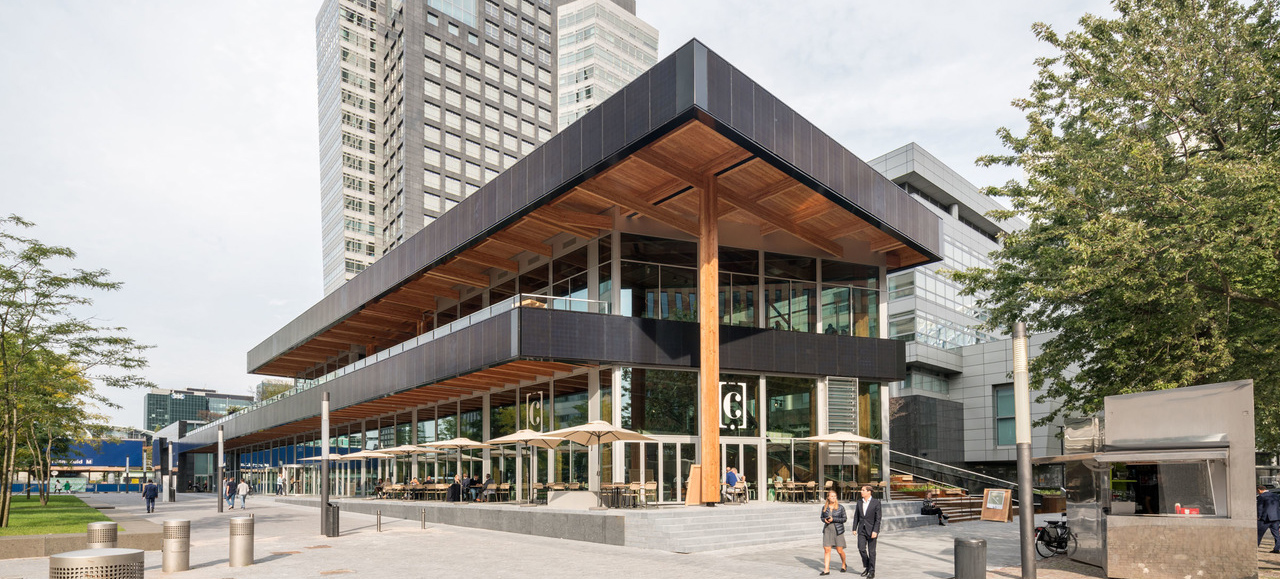Using reused and recycled materials
General description
Giving existing materials or components a new life is a key strategy of circular construction. Ideally, components are reused for the same purpose as in their original use but also the use in different functions and forms is common as well as the recycling of materials. Through these processes, the grey energy of the components and materials is saved. This approach requires the preparation of materials for a new use, a flexible design process, and, in many cases, form follows availability.
Examples
VILLA WELPELOO
Enschede, Netherlands
Approximately 60% of Villa Welpeloo's primary elements are repurposed, encompassing the wooden facade, steel structure, and portions of the interior furniture. Notably, a significant portion of these materials was locally sourced, with the farthest component traveling a distance of only 30 km to reach the construction site.
In the creation of the facade, former cable reels and wooden planks found new life, while the majority of the steel structure was salvaged from a previous textile machine. Through these resourceful choices, the project achieved a remarkable reduction in carbon dioxide emissions. Compared to a newly constructed building, Villa Welpeloo managed to avoid 90% of CO2 emissions throughout the construction and facade process.
Résilience
Stains, France
The glazed facade of the building incorporates reused windows that were reclaimed from the renovation of a social housing complex located just 4 km away from the site. This facade serves as a bio-climatic feature, creating a buffer zone between the insulated indoor spaces and the outside environment. Various materials and leftovers from the site were transformed and repurposed in the project. Pallets were repurposed into furniture, while leftover wooden cuts from the structural elements were used to create stairs. Nearby deconstruction sites provided windows and granite blocks, which were reused in the building. As a meaningful act of design, old fruit baskets were repurposed as lamp shades for the cafeteria. These examples highlight the wide range of architectural elements that were creatively repurposed and incorporated into the project.
Pavilion CIRCL
Amsterdam, Netherlands
The salvaged materials of the project could be directly reused without further processing, meaning costs, effort, and energy were saved. When there was no reuse possibility, materials were collected and processed as needed in order to produce a viable construction material. The team got hold of reused fire-hose reels, cable ducts, and paving stones. The hardwood floor installed in the ground and first floor originated from a former monastery, the window frames are from demolished houses and some from a dissolved office, the roof terrace is partially from a villa and from a waste collection facility, the bar originated from a Dutch football club and the metal frames on the benches in the court are made from bicycles that were fished out of the canals in Amsterdam. 16.000 jeans were donated by the office workers as well as 2.500kg of former corporate clothes, an example of how invested the bank was in the construction. The textiles were recycled into fibre and used as insulation and acoustic wall panels.
CRCLR
Berlin, Germany
Most of the reused components were installed as facade elements. It was easy to reuse components that are standardised, i.e., sanitary, ceramic, or shower trays because they require less preparation for reuse. The reuse of doors and windows was more complicated because of extra requirements for fire protection or energy concepts. The team brought many additional components - such as exterior windows, plumbing fixtures, and floor slabs - to the site, refurbished them, and thus retained the existing grey energy instead of installing new components. The removed steel trusses and steel purlins from the existing roof of the hall were reused for the extension as roof supports in the greenhouse and as stair stringers in a load-bearing function. Tensile tests were conducted to determine their strength, and chemical analyses were performed to demonstrate their weldability. In the future, the warranty for the reuse of steel components must be regulated legally.